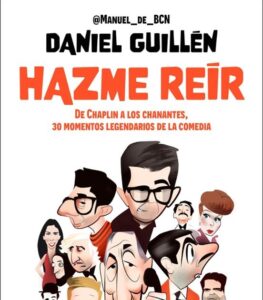
Original language: Russian
Original title: A century old day
Year of publication: 1980
Translation: Marta Sanchez-Nieves Fernández
Valuation: Highly recommended
Kyrgyzstan, another country to cross off the list of “Countries from which there are no authors reviewed in ULAD”. We only have Vanuatu, Lesotho, Liechtenstein, Central African Republic and a few others left. Maybe 25 years from now we will complete the world map!
Well, the fact is that this novel by Chinguiz Aitmatov is a very good novel, one of those that we could put under the label “If you want to be universal, talk about your town, your village.” Because, although the text is located in the Kazakh steppes and covers a time span that goes from the time of Genghis Khan to the Soviet-American space race, the themes discussed in it are universal and eternal.
The brief summary of the plot could be the day between the death and burial of the elderly Qazhangap, a railwayman for 40 years at the Boranly-Buranny siding. It will be his companion and friend Ediguei who will take care of the matter and who, throughout that day, will remember his life in the steppes. But I’m falling short.
More than a century the day lengthens It is the story of marginalized people who cling to luminous moments, of ordinary men subjected to the chances of History, of beings who live, fight, love and die between pain and hope. It is also a text that talks about the eternal struggle between the old and the new, “civilization” or “barbarism” (which one?), about the mechanisms of power and alienation, about the immutability and inevitability of certain things, about lives everyday, etc.
To talk about all this, the author resorts to two main lines (one more than the other, truth be told): the “realistic” and the “science-fiction”, the realistic line also having a series of detours and derivations, linked to the myth. and the legend, of utmost importance in the novel.
But More than a century the day lengthens It also has a “science-fiction” side that connects with Zamyatin, Aleksandr Bogdanov or the Strugatski brothers and that serves to unite present and future. Economic exploitation of outer space, extraterrestrial life, attempt at communication, fear of the unknown/otherness… Everything is very geeky, a lot of potential, but… It is this last aspect that makes the novel not have a somewhat high rating. superior. There is a thread that unites this plot with the “realistic” one, yes, but I think it is somewhat tenuous and that it does not have the same strength as the part linked to myths and legends of the past. Furthermore, the final impression remains that the story of the Parteit space station and the two astronauts who go to the newly discovered planet Mambla Selvatica is closed “falsely.”
In any case, the “mythical-realistic” part of the novel is truly magnificent and more than compensates for the slight disappointment left by the end of the special plot, leaving after reading the novel a more than favorable overall impression.
Source: https://unlibroaldia.blogspot.com/2024/11/chinguiz-aitmatov-mas-de-un-siglo-se.html


